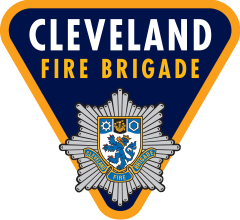Prohibition Notice In Force
SSL Healthcare Ltd
Premises ID: C0300523
Premises Type: Care home (B)
Issue Date: 07/03/2024
Address: Castle Dene and Woodside Care Home, Wilton Lane, Wilton Village, Redcar TS10 4QY
Reason Issued:
Article 31 – Prohibition notices
- If the enforcing authority is of the opinion that use of premises involves or will involve a risk to relevant persons so serious that use of the premises ought to be prohibited or restricted, the authority may serve on the responsible person or any other person mentioned in article 5(3) a notice (in this Order referred to as a prohibition notice).
- The matters relevant to the assessment by the enforcing authority, for the purposes of paragraph (1), of the risk to relevant persons include anything affecting their escape from the premises in the event of fire.
- A prohibition notice must
- state that the enforcing authority is of the opinion referred to in paragraph (1);.
- specify the matters which in their opinion give or, as the case may be, will give rise to that risk; and.
- direct that the use to which the prohibition notice relates is prohibited or restricted to such extent as may be specified in the notice until the specified matters have been remedied.
- A prohibition notice may include directions as to the measures which will have to be taken to remedy the matters specified in the notice and any such measures may be framed so as to afford the person on whom the notice is served a choice between different ways of remedying the matters.
- A prohibition or restriction contained in a prohibition notice pursuant to paragraph (3)(c) takes effect immediately it is served if the enforcing authority is of the opinion, and so states in the notice, that the risk of serious personal injury is or, as the case may be, will be imminent, and in any other case takes effect at the end of the period specified in the prohibition notice.
- Before serving a prohibition notice in relation to a house in multiple occupation, the enforcing authority shall, where practicable, notify the local housing authority of their intention and the use which they intend to prohibit or restrict.
- For the purposes of paragraph (6) house in multiple occupation means a house in multiple occupation as defined by sections 254 to 259 of the Housing Act 2004(1), as they have effect for the purposes of Part 1 of that Act (that is, without the exclusions contained in Schedule 14 to that Act); and local housing authority has the same meaning as in section 261(2) of the Housing Act 2004.
- Without prejudice to the power of the court to cancel or modify a prohibition notice under article 35(2), no failure on the part of an enforcing authority to notify under paragraph (6) makes a prohibition notice void.
- Where a prohibition notice has been served under paragraph (1) the enforcing authority may withdraw it at any time.
- In this article, premises includes domestic premises other than premises consisting of or comprised in a house which is occupied as a single private dwelling and article 27 (powers of inspectors) shall be construed accordingly.
Legislation.gov.uk reference for Prohibition notices.
Article 14 – Emergency routes and exits
- Where necessary in order to safeguard the safety of relevant persons, the responsible person must ensure that routes to emergency exits from premises and the exits themselves are kept clear at all times.
- The following requirements must be complied with in respect of premises where necessary (whether due to the features of the premises, the activity carried on there, any hazard present or any other relevant circumstances) in order to safeguard the safety of relevant persons
- emergency routes and exits must lead as directly as possible to a place of safety;
- in the event of danger, it must be possible for persons to evacuate the premises as quickly and as safely as possible;
- the number, distribution and dimensions of emergency routes and exits must be adequate having regard to the use, equipment and dimensions of the premises and the maximum number of persons who may be present there at any one time;
- emergency doors must open in the direction of escape;
- sliding or revolving doors must not be used for exits specifically intended as emergency exits;
- emergency doors must not be so locked or fastened that they cannot be easily and immediately opened by any person who may require to use them in an emergency;
- emergency routes and exits must be indicated by signs; and
- emergency routes and exits requiring illumination must be provided with emergency lighting of adequate intensity in the case of failure of their normal lighting
Legislation.gov.uk reference for Emergency routes and exits.



